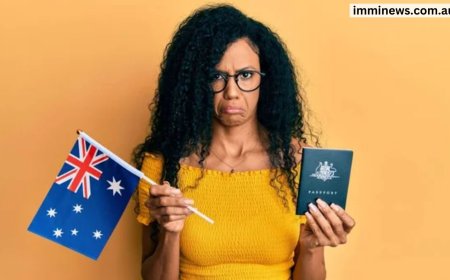Australia to Charge $5000 for Student Visas? Here's What You Need to Know
Australia may soon have the world's most expensive student visa. Discover the impact of the Coalition’s $5000 visa fee proposal for international students.

Introduction
In a move that’s sending shockwaves through Australia’s education and immigration sectors, the Coalition has proposed a dramatic increase in student visa fees—up to $5000—for international applicants to elite Group of Eight (Go8) universities. This shift could make Australia the most expensive study destination in the world, triggering concerns about affordability, fairness, and long-term impacts on the nation’s international education sector.
As Australia Immigration policies grow increasingly complex and politically charged, this proposal could redefine the future for international students, particularly from countries like India, Nepal, and the Philippines. But what does this mean for Australia’s global reputation as an education hub?
Let’s explore the significance of this proposed policy change and what it may spell for Australia’s economy, migration trends, and global image.
The Significance of the Coalition’s $5000 Visa Fee Proposal
1. Strain on Students from Developing Countries
The fee hike disproportionately affects students from less affluent nations. Many prospective students from India, Nepal, and the Philippines already face high tuition fees, living costs, and limited work rights under their current Student Visa (subclass 500). A non-refundable $5000 visa fee on top of these could make Australia unaffordable.
As Nepali student Roshana Khatri shared, the added burden of rent, restricted work hours, and high costs might force students to reconsider their study plans.
This shift could redirect students to more welcoming countries like Canada, the UK, or New Zealand, impacting Australia’s competitiveness in global education.
Australia’s 2025 Visa Hike – Indian Students & Visitors to Pay More
2. Threat to Australia’s $51 Billion International Education Sector
International education is Australia’s fourth-largest export, generating $51 billion annually. Group of Eight universities such as the University of Sydney and University of Melbourne contribute significantly to this sector—not just in tuition, but in research and innovation.
The Go8 estimates a $1.2 billion hit to their revenue if this policy goes ahead, risking thousands of jobs and slowing research breakthroughs.
According to Vicki Thomson, CEO of the Go8, the policy unfairly targets top-performing institutions without addressing underlying housing or infrastructure issues.
3. Minimal Impact on Housing Crisis
The Coalition’s primary justification is easing the housing crisis. Yet, international students make up only 7% of Australia’s private rental market—and are highly concentrated in areas like the Sydney and Melbourne CBDs.
Even the Business Council of Australia and Property Council of Australia have criticized the move, labeling it a political scapegoating tactic rather than a practical housing solution.
Melbourne Lord Mayor Nick Reece opposed the idea, stating that international students are vital to Melbourne’s economy and cultural diversity.
4. Potential Shift Toward Private Colleges and Rorting Risks
Interestingly, the policy allows for more students in the private and vocational sectors (125,000 vs 115,000 in universities). Immigration expert Abul Rizvi warns this could open the door to more education scams and quality issues—since the private college sector has historically been a hotbed for rorts and loopholes.
This balance could compromise educational standards while allowing unscrupulous players to profit.
You can explore more related insights on Australia Immigration Updates.
5. Undermining Australia’s Multicultural Image
Charging high, non-refundable visa fees sends a contradictory message for a country marketing itself as diverse, multicultural, and welcoming.
Student advocate Bijay Sapkota said the move exacerbates existing racism and marginalization of international students, especially when they’re unfairly blamed for broader economic issues.
It may further affect integration efforts and discourage international students from becoming long-term contributors to the Australian economy.
A High-Stakes Gamble for Australia’s Global Image
The Coalition’s proposed $5000 visa fee could have far-reaching consequences—not only for international students but also for Australia’s global image, economy, and higher education landscape.
At a time when Australia should be strengthening its global education standing and cultural diplomacy, such measures may undermine decades of progress.
For aspiring students or migrants seeking clarity amidst these evolving policies, expert guidance is crucial.
Book a consultation with A2Zimmi here to understand your best visa options and study pathways in Australia.
Whether you’re planning your migration journey or exploring your study options, we’re here to support you every step of the way.
What's Your Reaction?
 Like
0
Like
0
 Dislike
0
Dislike
0
 Love
0
Love
0
 Funny
0
Funny
0
 Angry
0
Angry
0
 Sad
0
Sad
0
 Wow
0
Wow
0







































































































